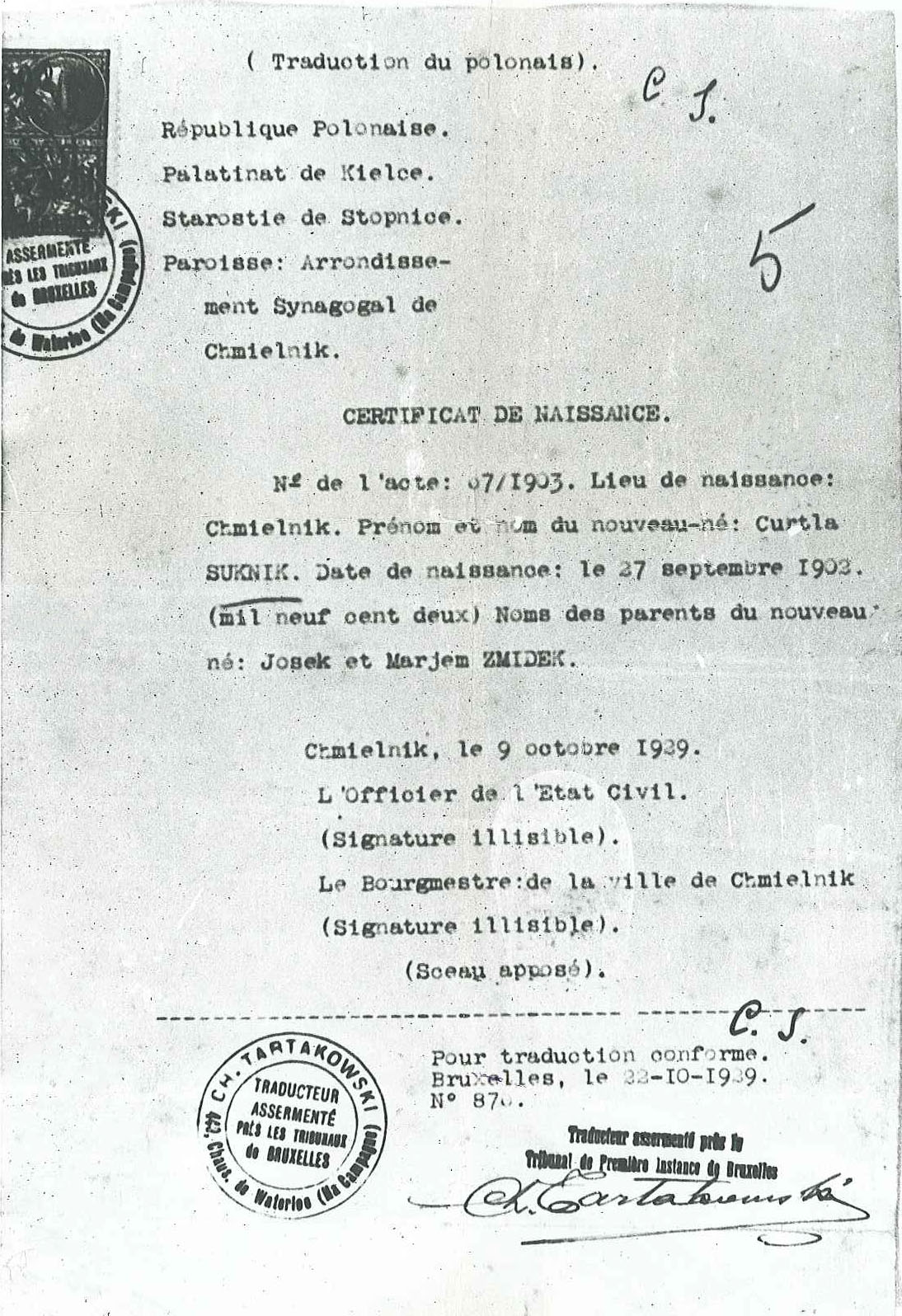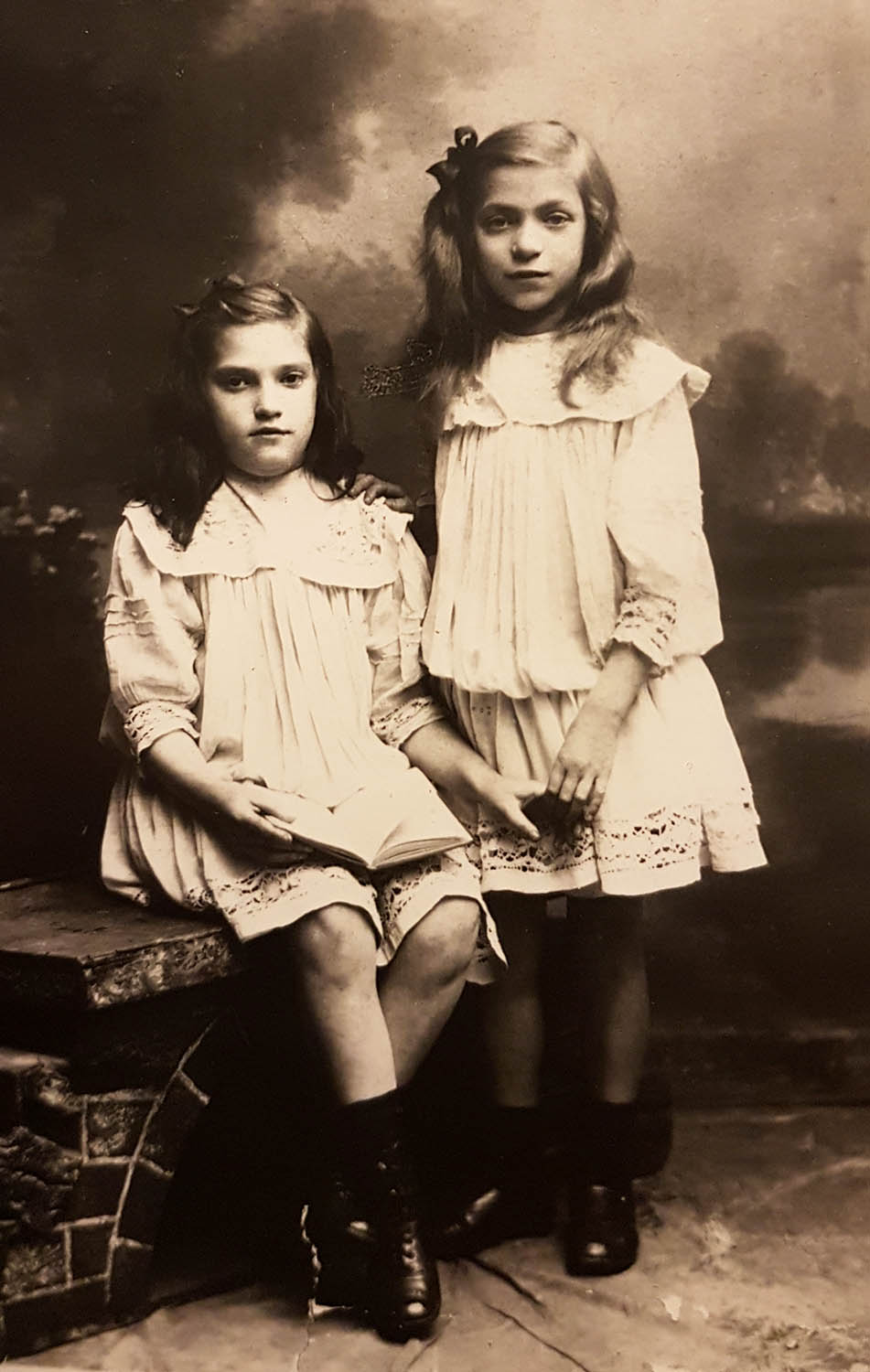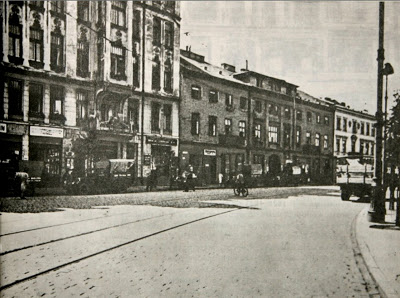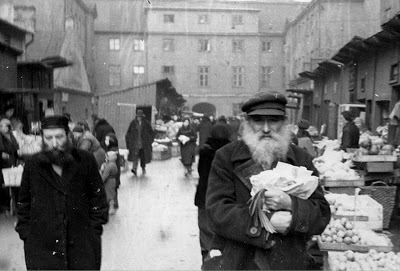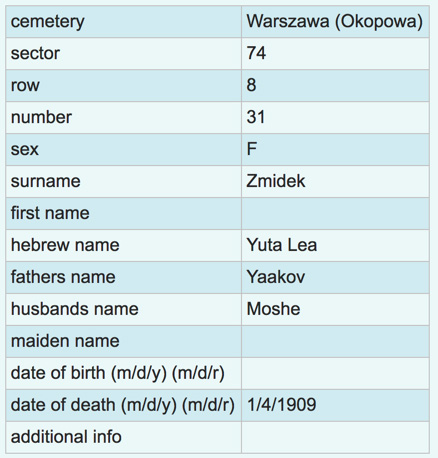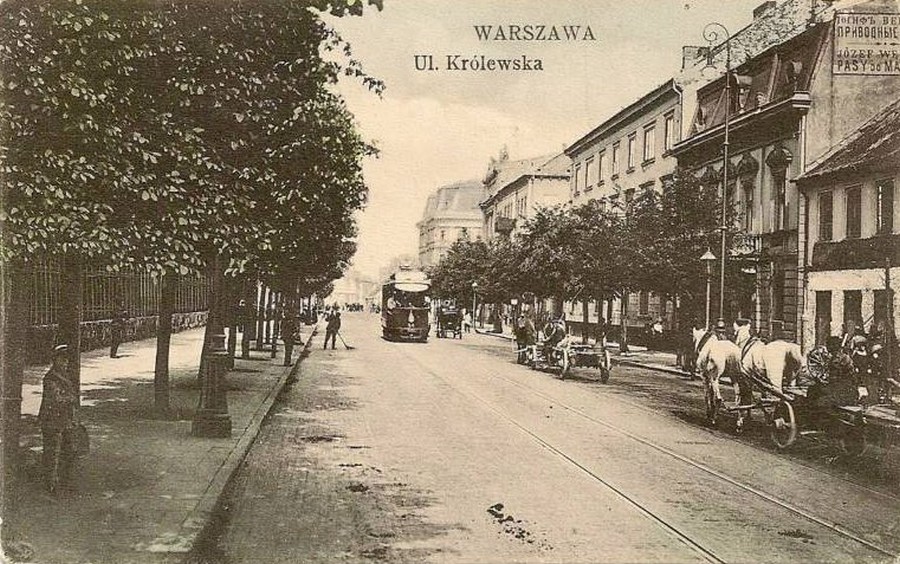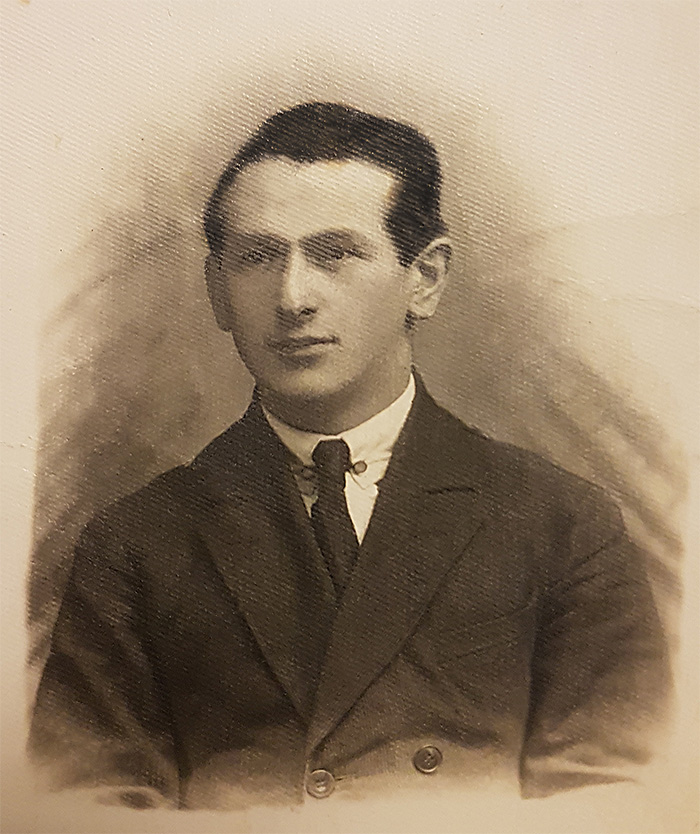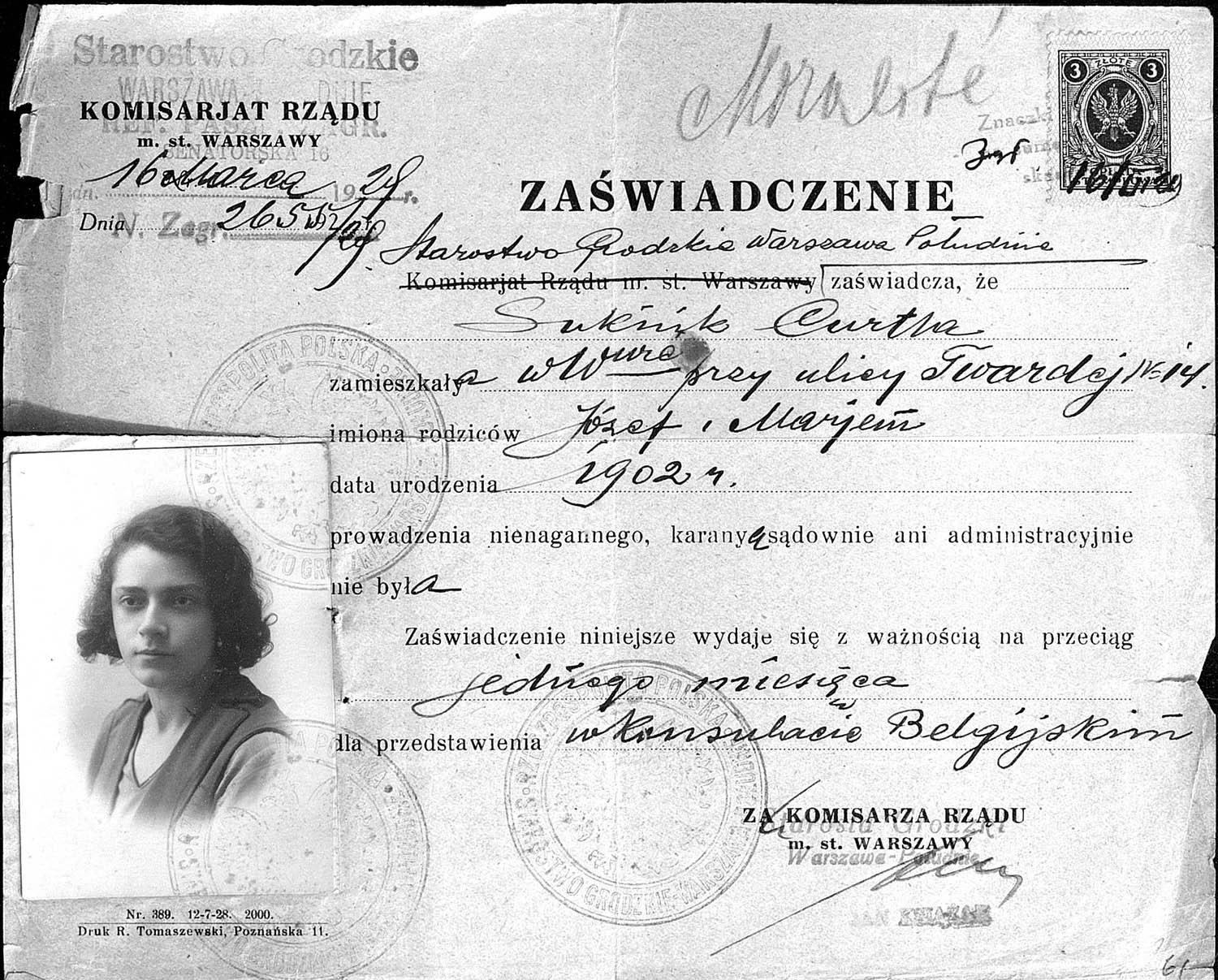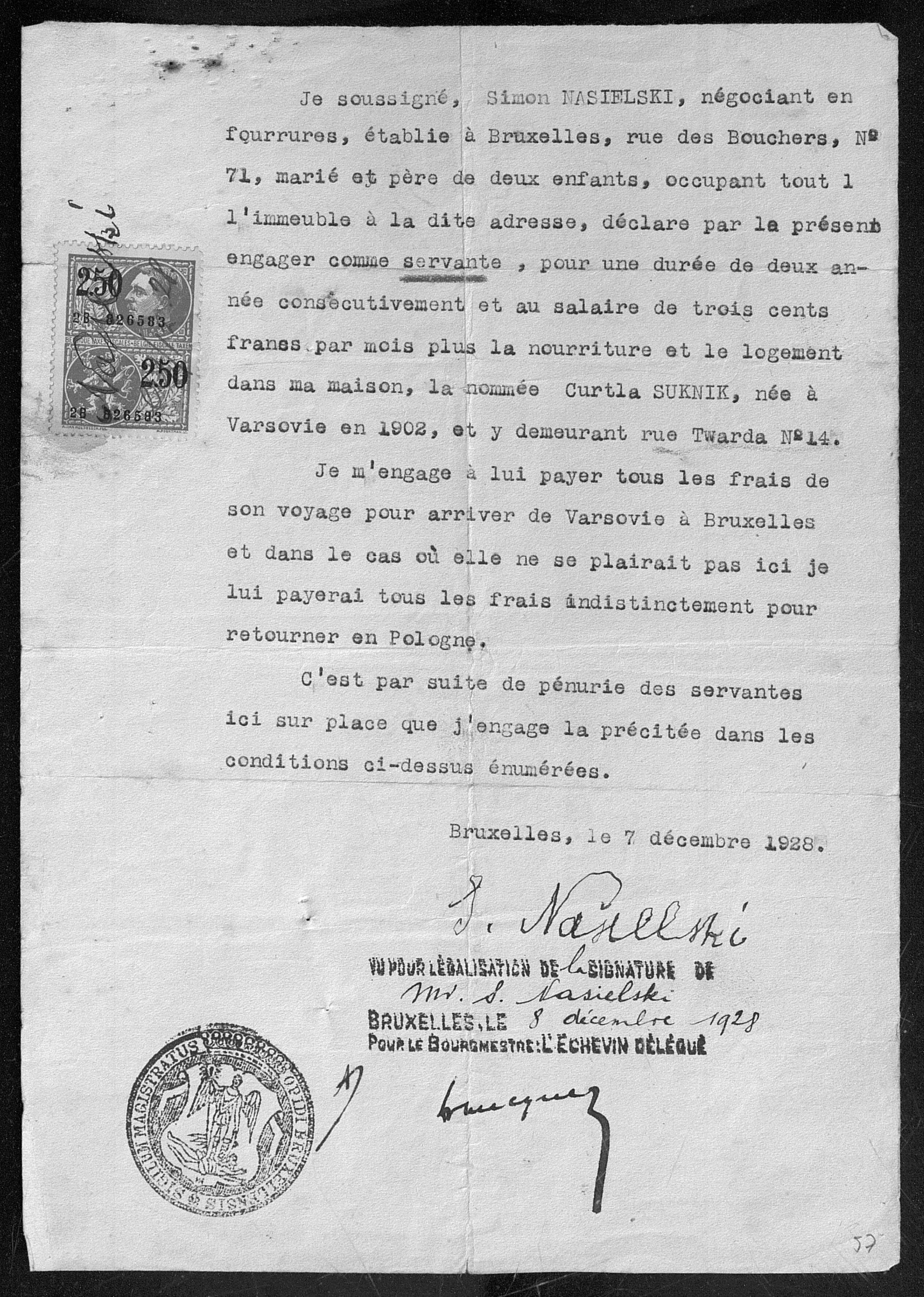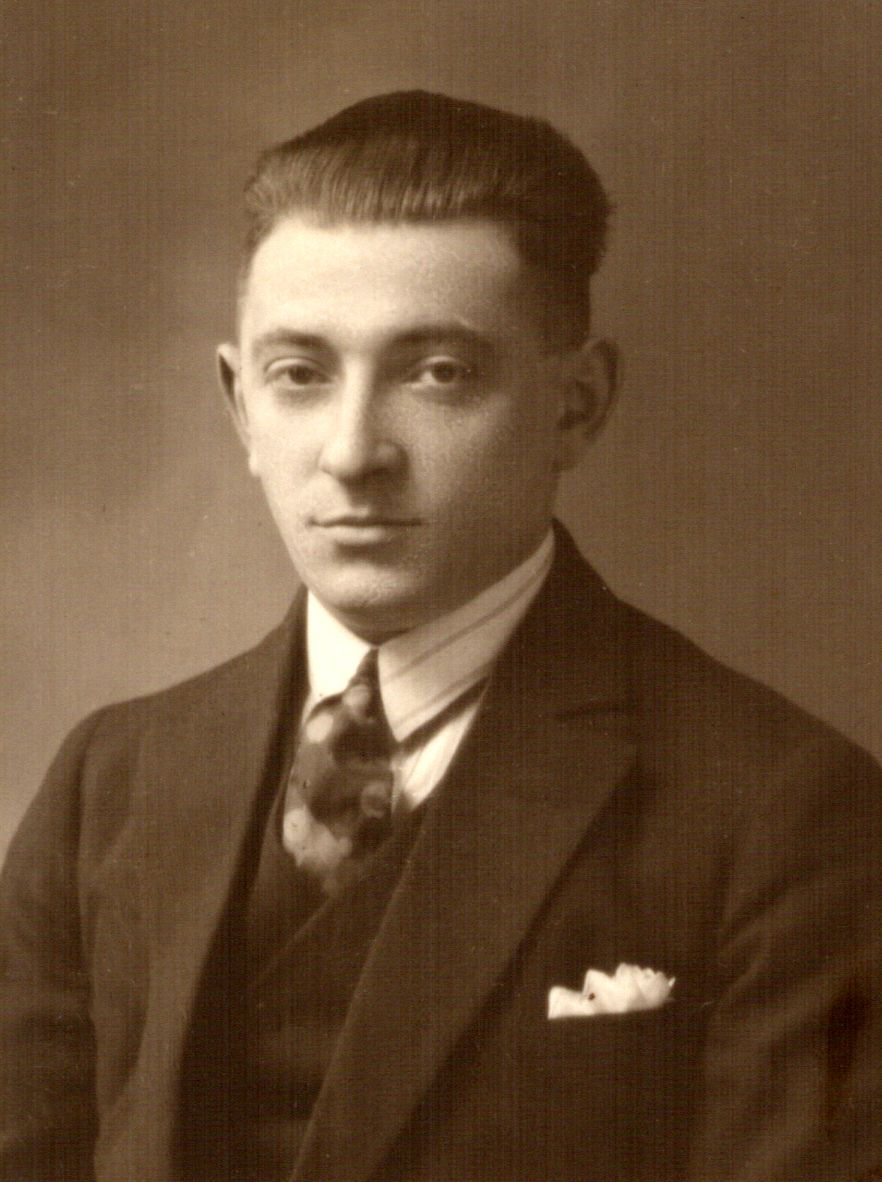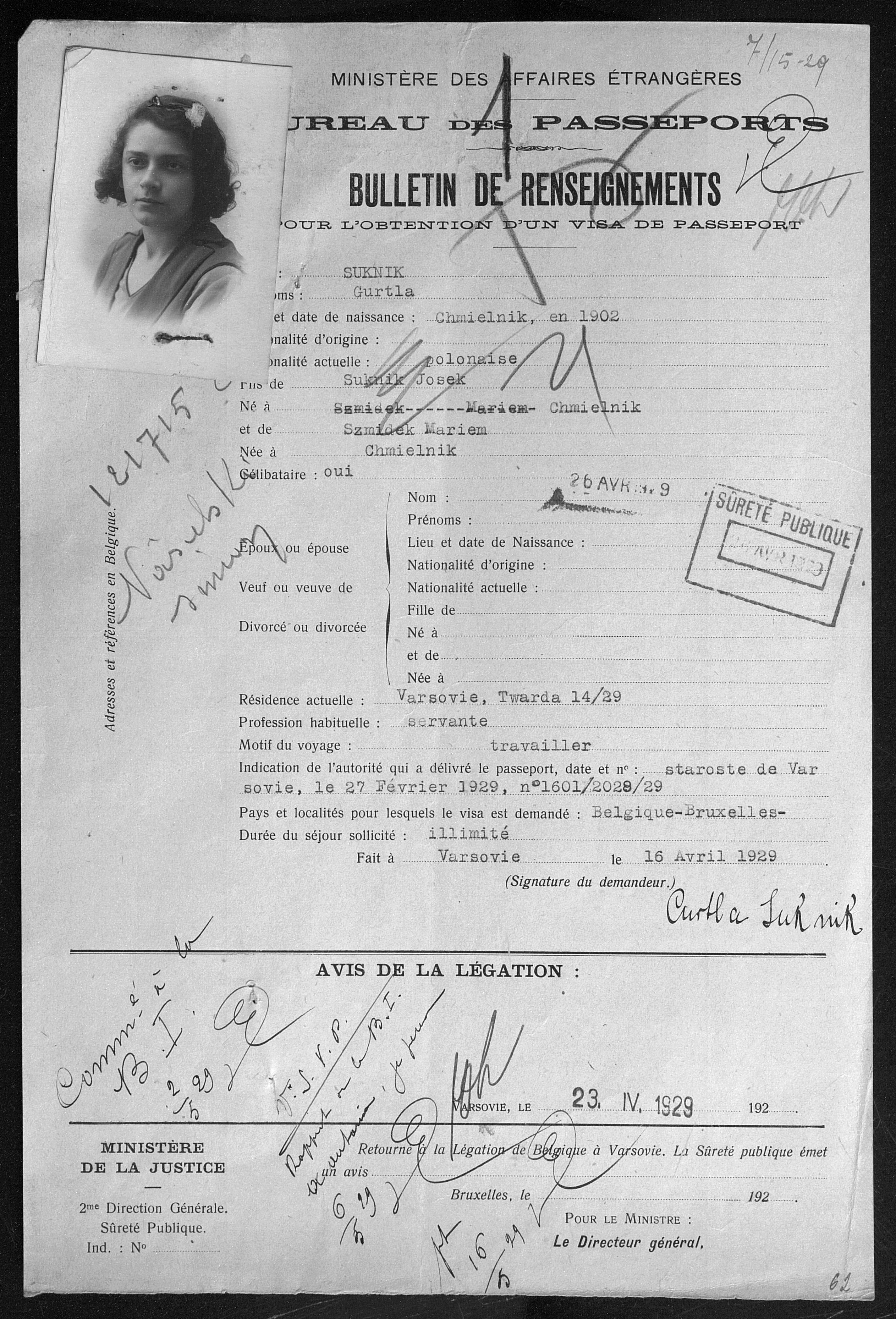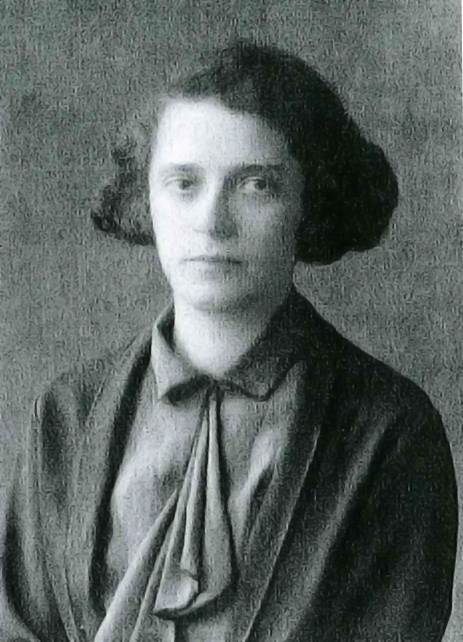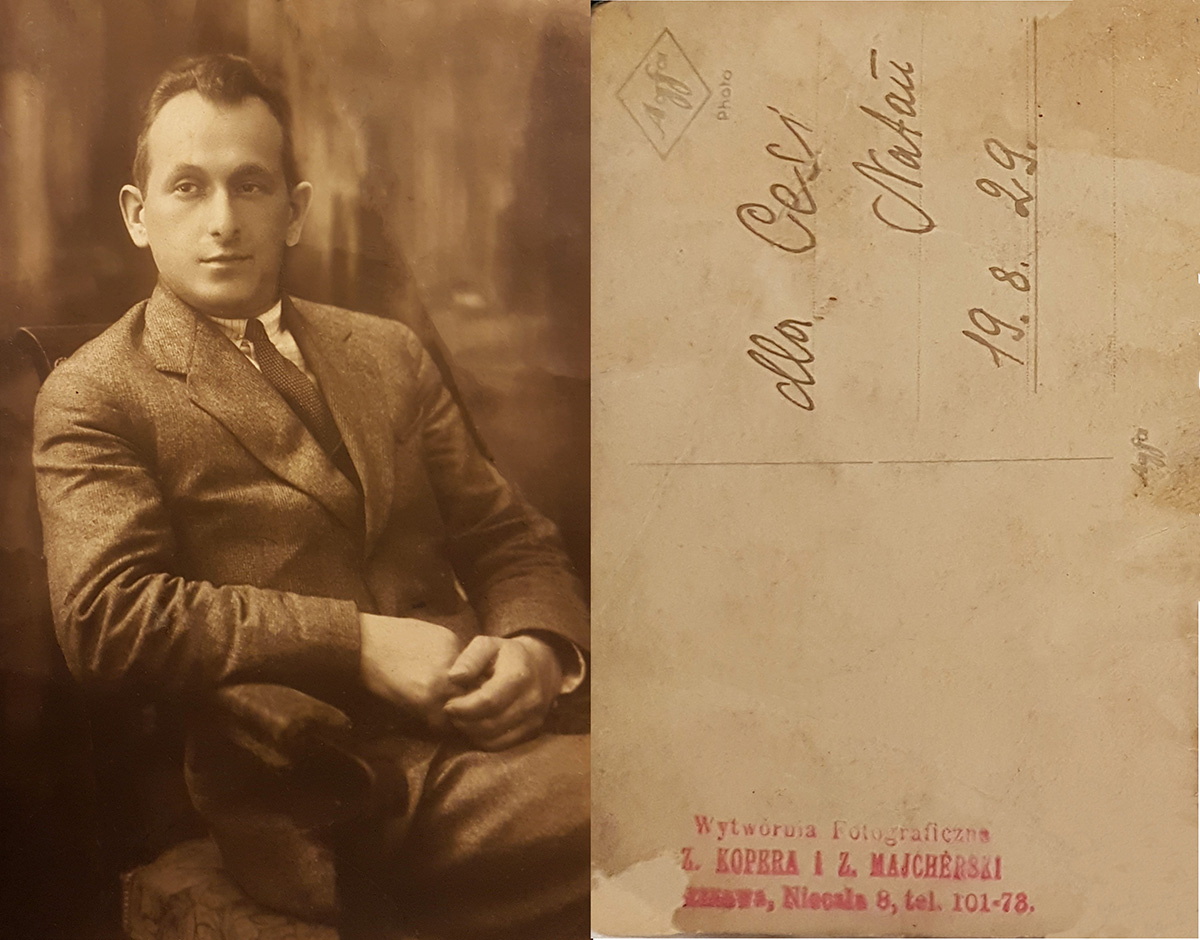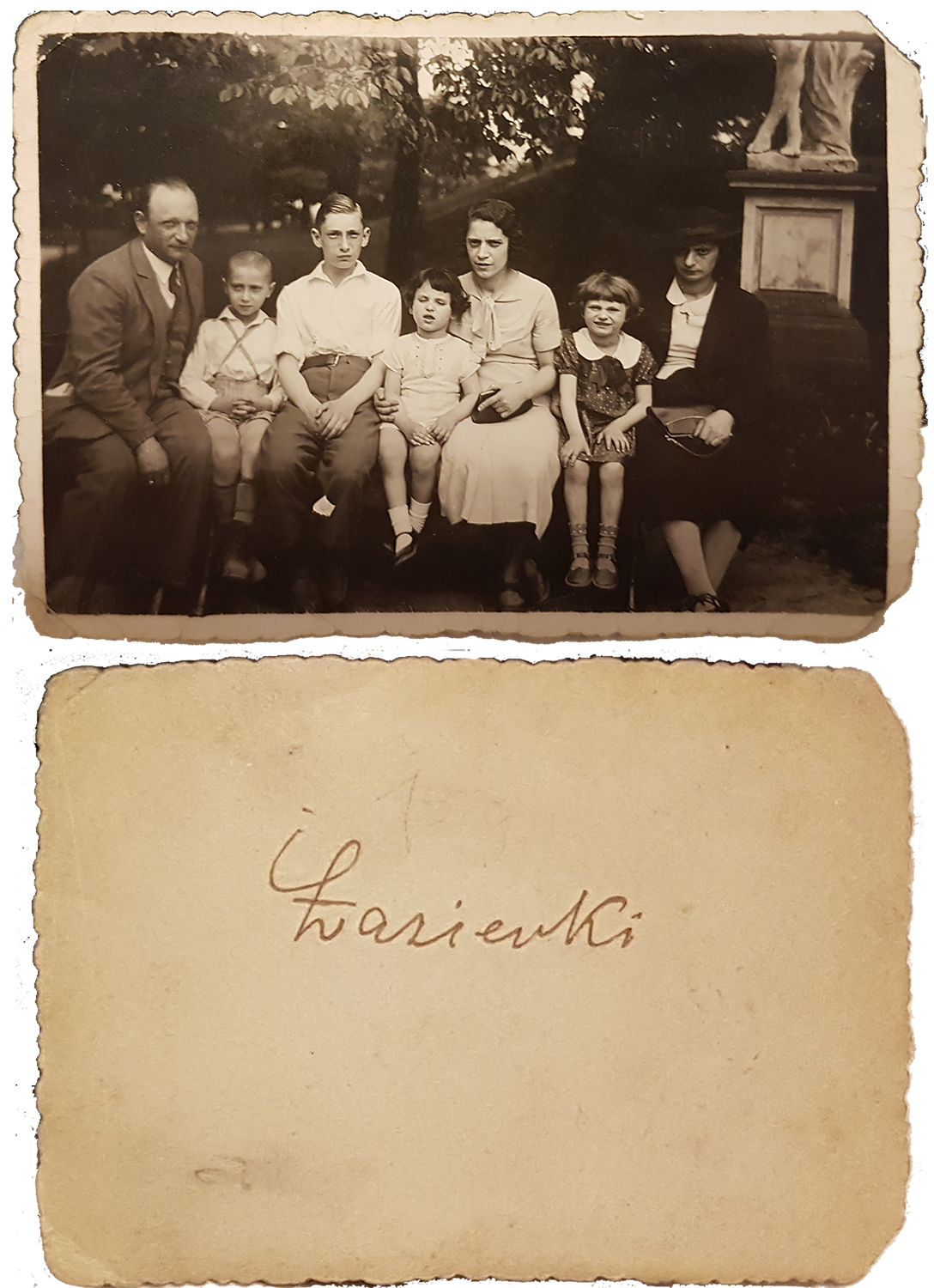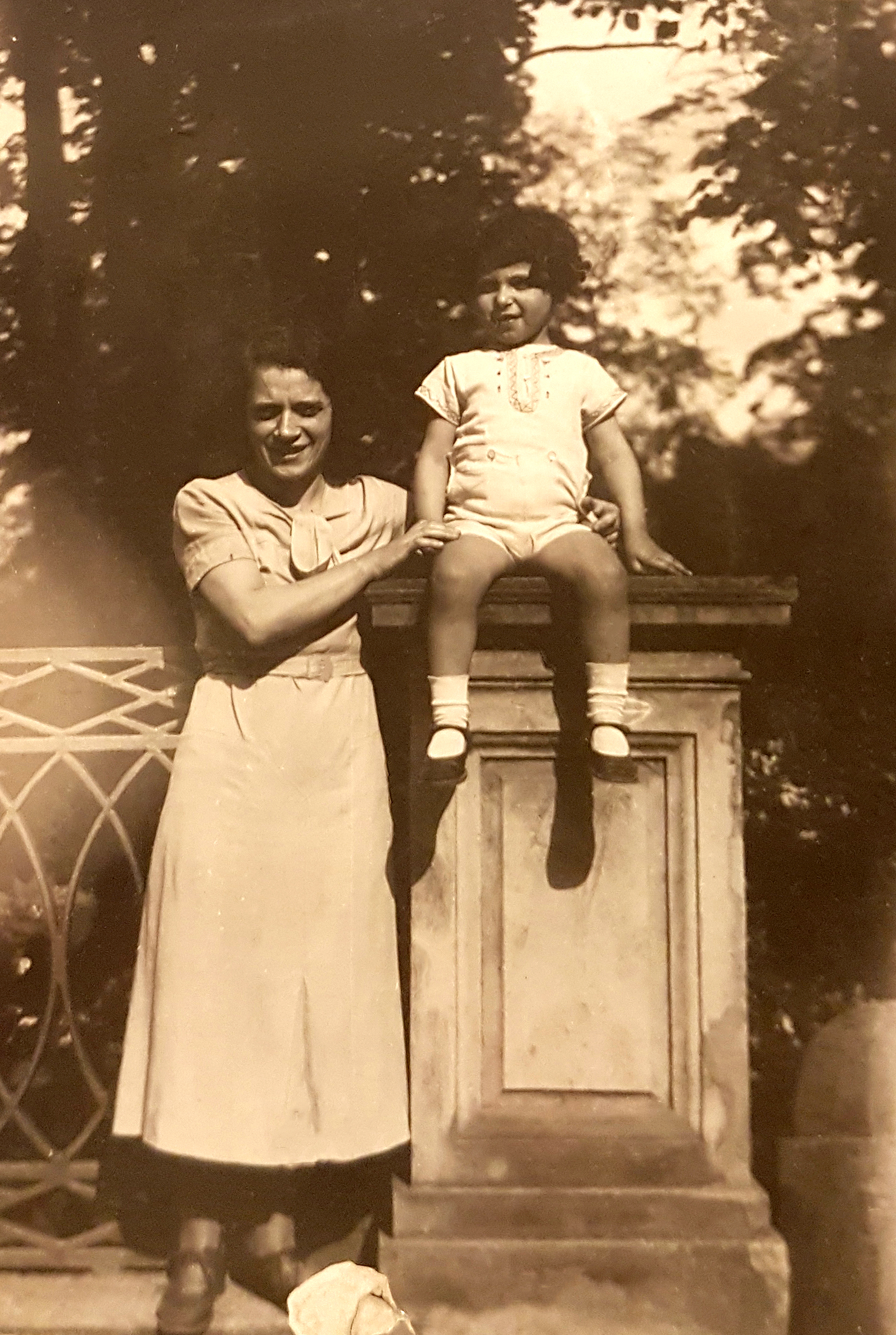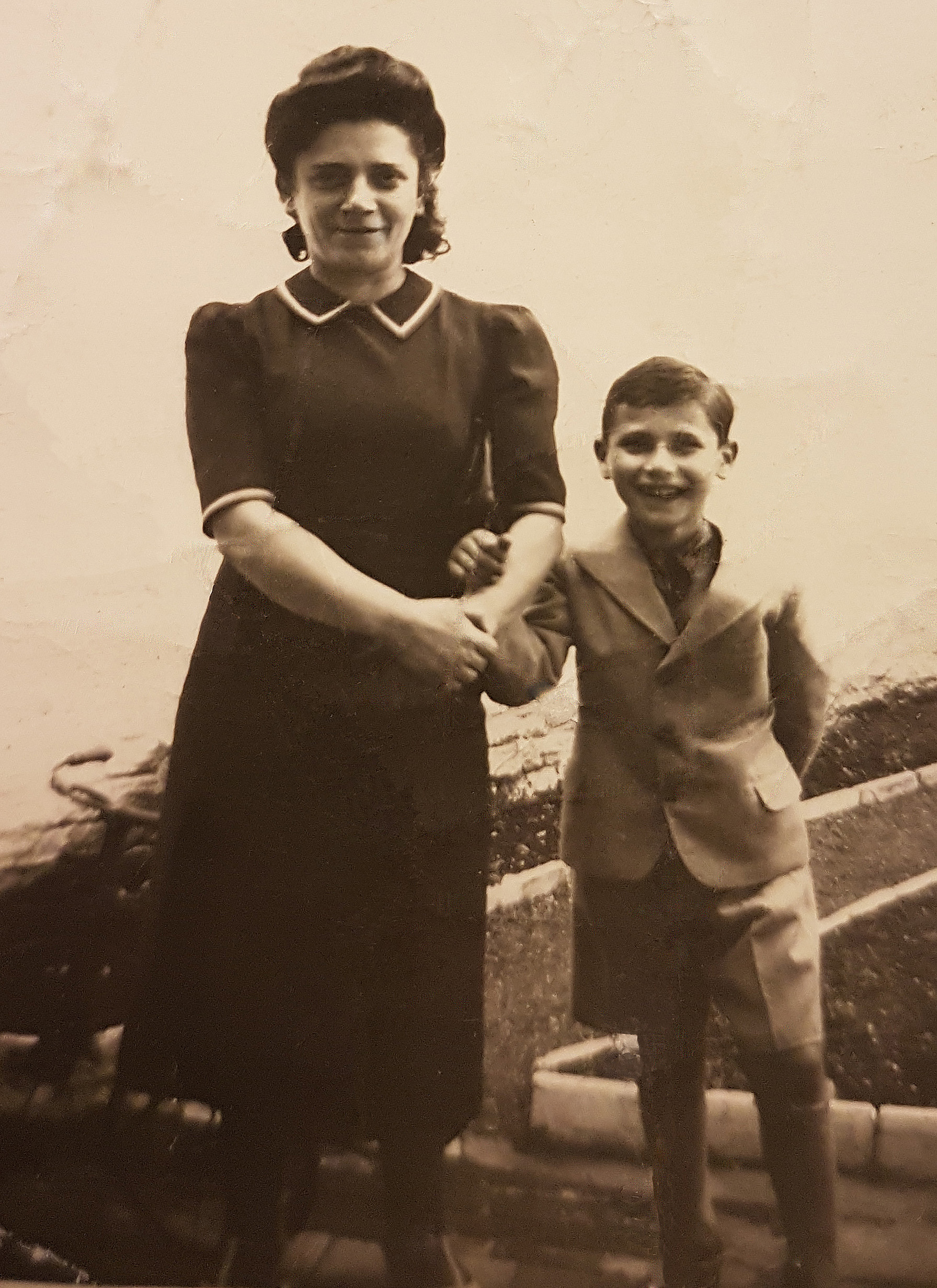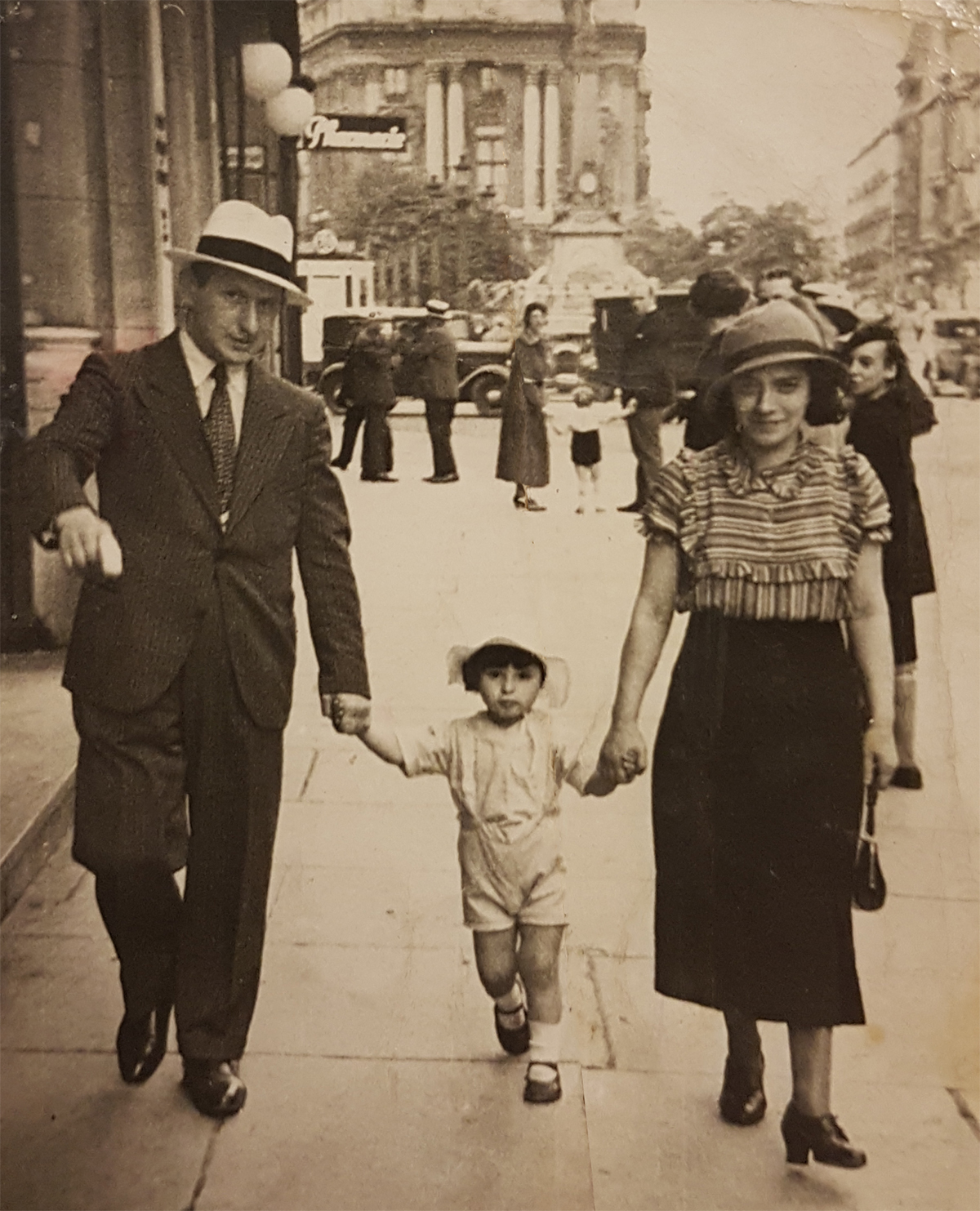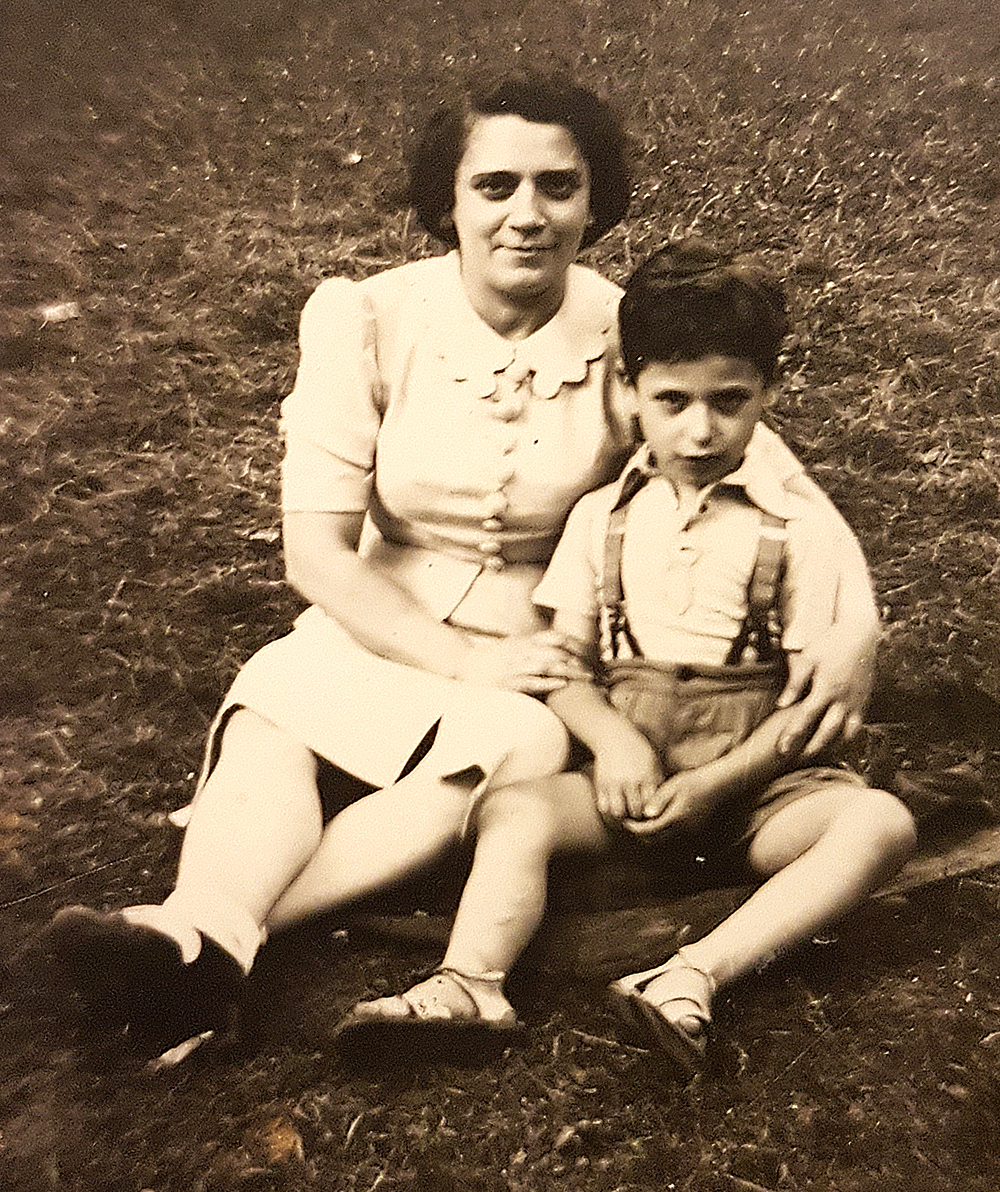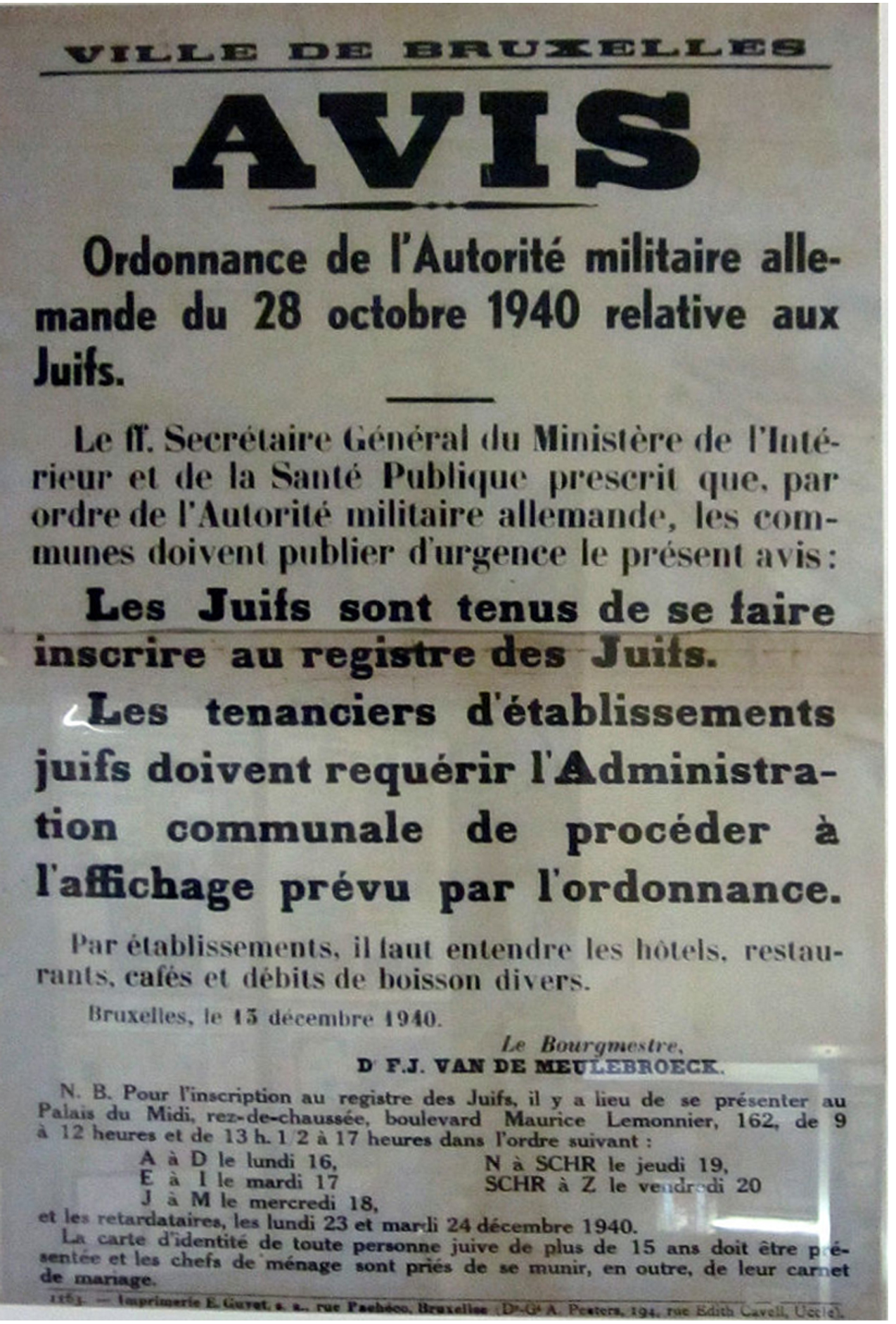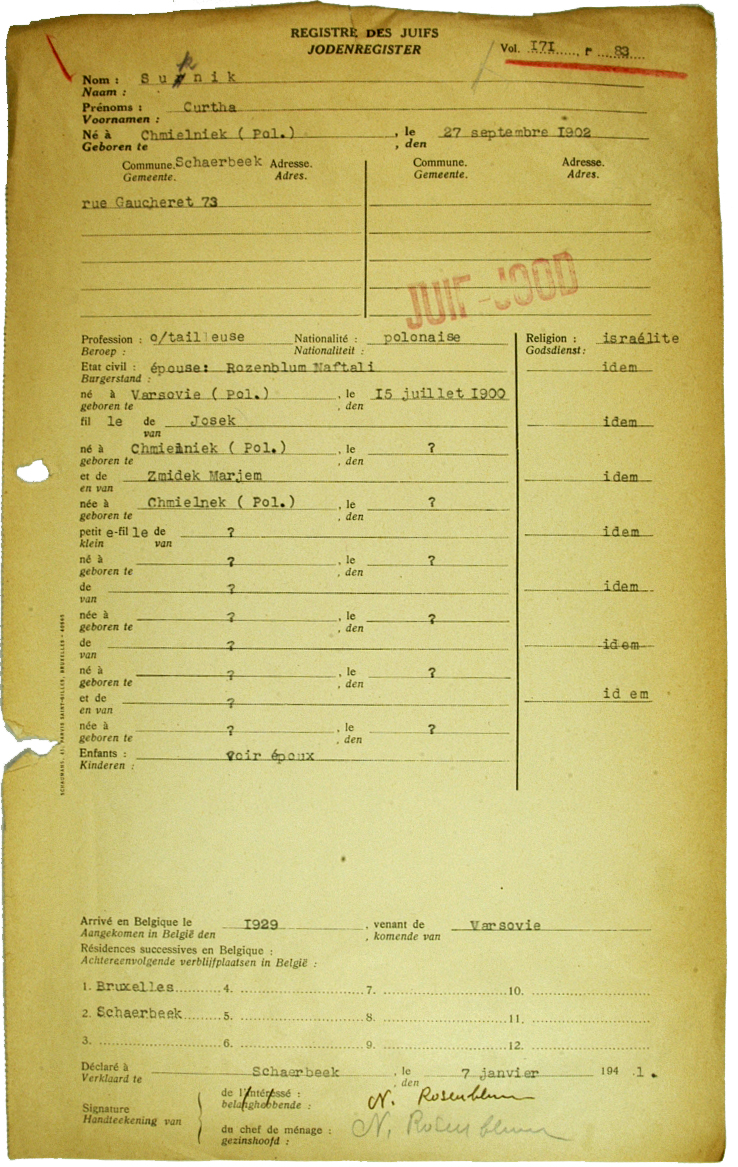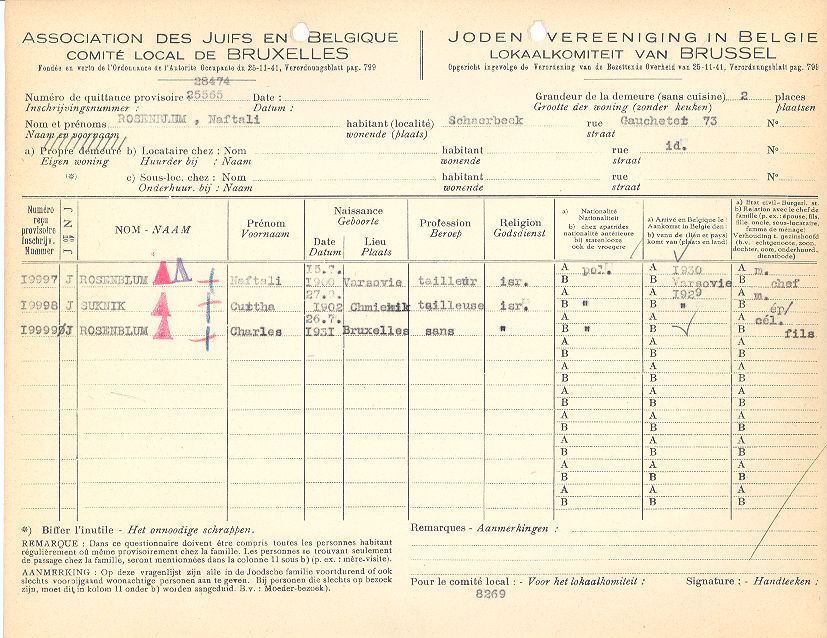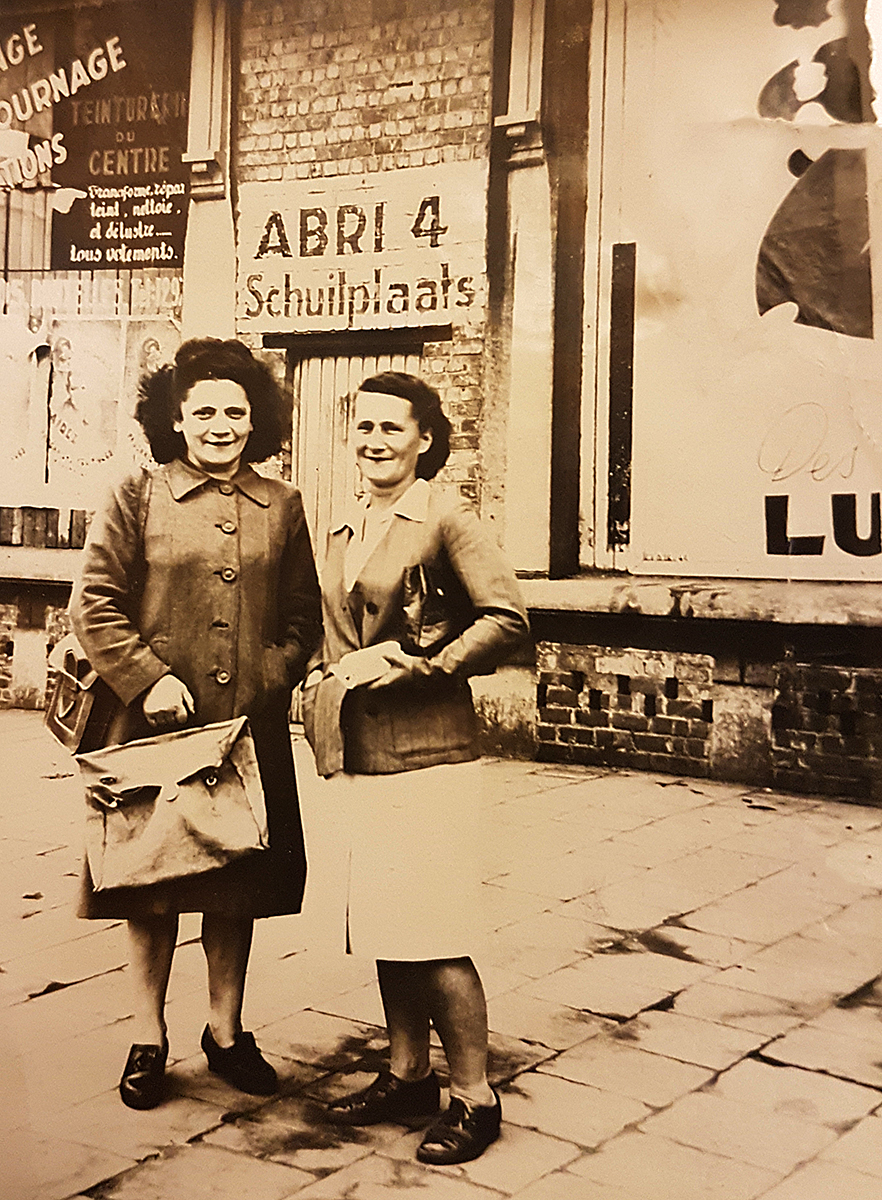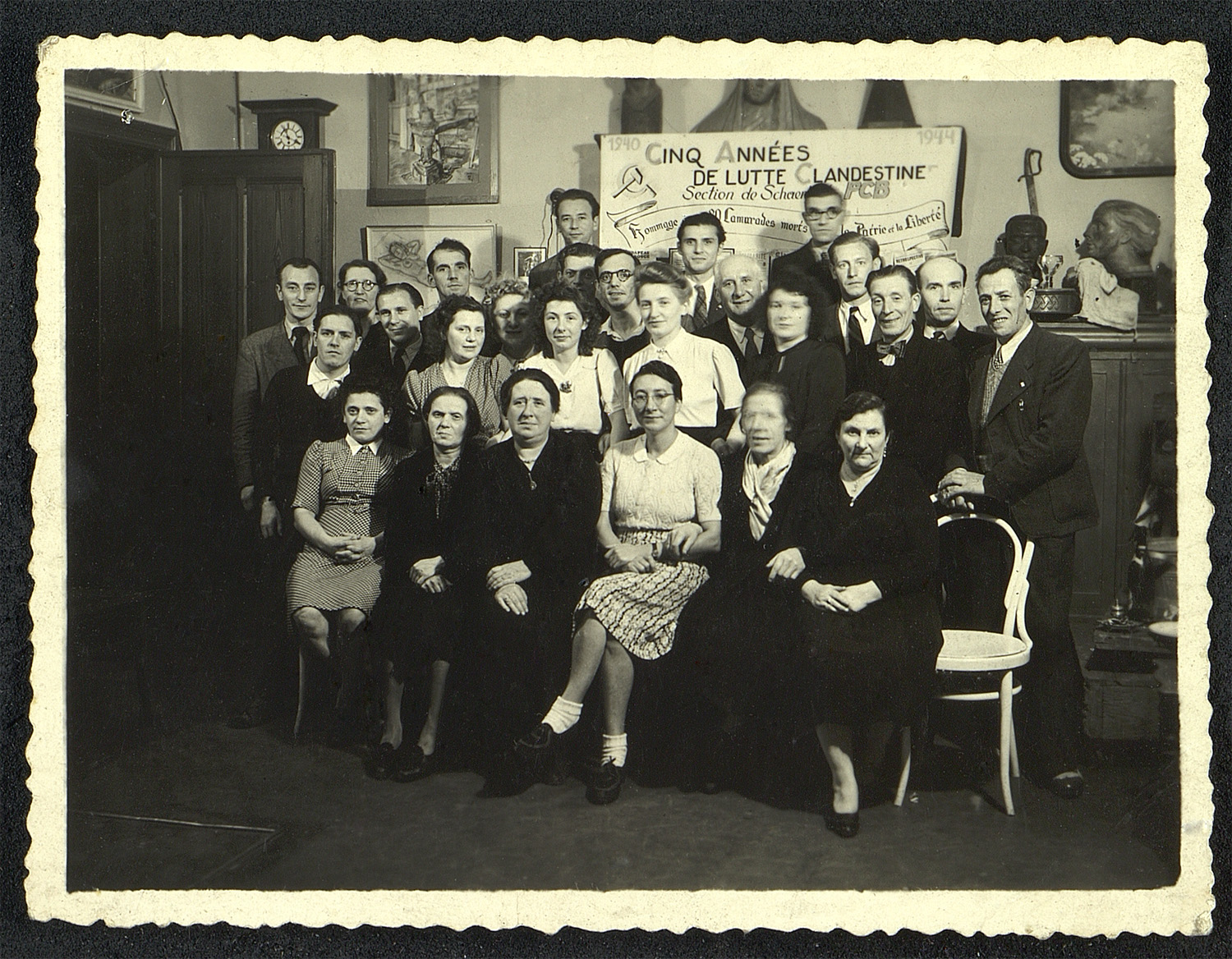The Testimony of Cesia Rozenblum nee Suknik
Click on the Tree to enlarge
| Cesia was the 5th child of Mariem (Zmidek) and Josek Suknik. What follows is her Testimony written in 1979 with other details provided by family members and archive material. |
I was born on the 27th of September 1902 in Warsaw. According to the Russian Law my parents needed to make a special request for a birth certificate from Warsaw which was very expensive. It was cheaper to register our births in Chmielnik , where my parents used to live, which is what is written on the certificates. Our living space in the attic consisted simply of two rooms and a kitchen. My parents sublet one of the rooms to a dressmaker who made underwear and dresses. One day, my parents went out, and left me with the dressmaker. I was alone and decided to go out and look for other children to play with, the son of a cousin was living in a building in front of our house. His name was “Cholke” and was the same ages as me. We played “ being married”. I was, of course the bride, and he was the groom. In the dressmaker�s room I found pieces of tissue with which I dressed myself up. We made a pedestal for me and the bridesmaids. |
An official translation of Cesia�s birth certificate that she needed in Belgium later in her life. |
| At the time, it was a very hot summer, and after sunset my mother (Mariem) went for a walk around the square with one of her friends. I was fascinated because we were walking straight, but we somehow returned to the place where we started. I remember that I was wondering how this was possible. I started to have trouble sleeping because this was disturbing me. My mother saw that I couldn’t asleep as I was sleeping in the same bed with her.She started to worry about my nightmares and finally she decided to call a Fleczer (Note: Fleczer was a person who wasn't a doctor but more than a nurse. It doesn't exist now but before the war it was very popular in Poland. His visit was cheaper than doctors visit and he knew quite a lot.).The mystery was solved and the man explained to me the reason. The unsettlement stopped. |
|
|
Tova and Ester |
When I was 4 years old (more or less) my mother gave birth to twin girls. The blond one was called Tova, and the dark haired girl was named Ester.Late I saw how they were opposites. I do not remember much of my brothers. Two of them were blond, and the third dark haired. Symcha was a salesman in a feather shop for quilts. Meir was apprenticed to a clockmaker. Szyja was working in a mens clothing shop. Most evenings he went out to Dance halls. This is how he met his future mistress, Mrs Nasielsky, and her husband a dance instructor. When I was 9 years old, my mother told me she was illiterate, but she did not want the same for her children, and so I went to school. At that time Poland was occupied by Russia, and I was taught to read and write in Russian and learnt Russian grammar. My father was a blacharz (tinsmith) . His job was to fill holes in enamel pots, by diluting a metal with a soldering iron. He could also replace the bottoms of pots and pans. He covered the pot or pan with a sheet of metal that could be folded. However my father�s job alone could not feed a family of 6 children so my mother had to start working. At the time we were living in an apartment on the ground floor which consisted of a large family room, a kitchen with a cooker for preparing chales ( Yiddish for chabbat halot) and biscuits for Shabbat. My father installed his “workshop” in the kitchen under the window. |
My mother started a business to try to earn some money in the “Bazaar Zwarda, 1”. [ It was also known as Bazaar Icek Borowski or Bazar Icka Borowskiego ] She prepared a soup, made with noodles and milk. When the first batch of soup was sold she came back with the (empty) kettle to pick up the next one. My job was to keep an eye on the soup whilst it was boiling. She sometimes sold biscuits she was preparing in the oven. She earned good money but she had to work a lot. The most beautiful day at home was the Shabbat. Friday evening, my mother and my father washed themselves “well” and we ate fish with the ‘chales’. My father and my brothers sang Canticles (Hymns). |
Bazar Icka Borowskiego between Pa?ska 22 and Twarda 1 |
|
On Saturday, my father used to take me for a walk along the Vistula.I could see the boats carrying produce like apples. I loved the Vistula. Later, when I was very active in the communist party, after work, I used to go and wind down by walking along the Vistula. When I returned to Poland in 1949, the first thing I did, was run to see it again. World War 1 arrived. I finished going to school as they were all closed. War was really there and with it, antisemitism. And hunger. Even before the war, I didn’t eat that much. My mother was worried about what I was eating. But I wasn’t ill, just thin. |
The house in the back of the photo is Twarda 1 |
|
To earn a bit of money, my mother decided to make some kind of biscuits using potatoes as a main ingredient .Four years later the war ended the Russian occupation and Poland became an independent country. Schools reopened and I went back in school but this time learning in Polish and at the age of 15, I finally finished Primary School.
|
|
1909 - April 1st - Ita Laja (Yuta Lea) , Cesia�s step - grandmother, died aged 68. Buried at Okopowa Cemetery Warsaw |
||||||||||
With the armistice signed in 1917 between Russia and Germany, schools reopened and I went back in school but this time, (learning) in Polish. At the age of 15, I finally finished Primary School. Teenage YearsMy mother encouraged me to learn to be a tailor, and so arrange for me to become an apprentice to a dressmaker. I had to learn the trade whilst working for no pay for 6 months. The truth was that I didn�t learn anything during those months because I did everything but dressmaking. |
||||||||||
|
||||||||||
|
||||||||||
I was a supporter and helped create an organization called the “Kombund” which was one of many at the time that included the Communist Party and the Communist Youth. After a period of time the Kombund was integrated into the Communist Party. I very quickly became active in the Communist youth, at first responsible for the “Pioniers”
On another occasion I went to visit a comrade in jail. During the visit a prison warden monitored everything we said and gave to each other.I had a very important document I had to give to him. I held it between my fingers, and somehow with shaking hands managed to pass it to him.
|
||||||||||
Late 1920s. In all of Cesia's documents relating to the visa for Belgium (see below) she is recorded as living at Ulica Twarda 14 Warsaw. In this photo of the street below number 14 would be far at the back on the left hand side. This was the same address given by Cesia's brother Meir and their cousin Szmul Lament for their bag factory.
|
||||||||||
1928 & 29 Moving to Belgium |
||||||||||
I quickly got a passport and a visa and came to Brussels in July 1929. Natan came 3 months later on a renewable 2 month visa.
My brother wanted to talk about me having a religious marriage with a Rabbi, but I refused. The next day he kicked me out of the house and we were forced to live in a Hotel in the same street. We were soon so disappointed to see that all our dreams of travel were utopian and childish. There were lots of Poles living in Brussels at the time, mostly trying to earn a living illegally. |
||||||||||
|
||||||||||
|
||||||||||
|
1935 Visit to Poland When Kark was 4 years old we decided I would make a trip to Poland with the hope that I could live again in Warsaw. |
||||||||||
|
The photo above was taken in ?azienki Park, Warsaw . |
1935 Curtla and Charles in Warsaw |
|||||||||
I made contact with former comrades of the Communist Party who explained that the situation was very bad in Poland. Poverty was everywhere, unemployment was high amongst the workers and many had emigrated. |
||||||||||
|
||||||||||

